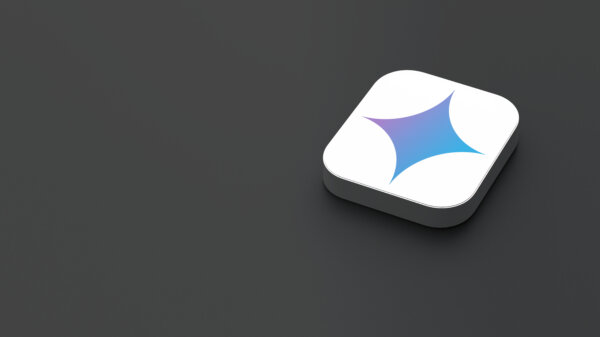Leveraging data collection for PR campaign success
Data can make or break a digital PR campaign. With the right tools and approach, gathering the right data for your campaign starts with good planning. As a data-led campaign built on shaky statistics, will only lead to problems further down the line. So good data matters.
Data can feed into a successful Digital PR campaign in various different ways. It can be a tool to support another element – such as reactive expert comment – or it can be the core element from which a campaign is built around.
A solid data-led approach is a particular favourite here at Distinctly. Here we explain the steps we take to ensure we’re setting our PR campaigns on the right track to success.
The idea takes precedence
Before diving headfirst into datasets, it’s important to have a seed of an idea first. An idea which you believe would give a good news angle
By all means use data exploration as a means to ideate, but just the data itself won’t make a successful campaign
Without an idea of what the final campaign wants to be, or a narrative that you want to weave, you will find yourself getting lost, and the final story could become unclear. Having a final goal helps to direct the search for data, and the method you will use to obtain it (more on that below in Methods of Data Collection).
Everyday data exploration
Keep tabs on what’s out there as and when you come across it, otherwise you’ll find yourself starting from scratch and spending unnecessary time researching data sources every time.
Look behind the stories when researching. All journalists worth their salt should provide insight into data sources for their stories. In turn, this is why all digital PR campaigns should provide methodologies for the campaigns. When reading the news or the many handy Digital PR industry newsletters, be inquisitive and seek out how conclusions were drawn from data and the methodologies behind it.
As you go about being inquisitive, bookmark sources of data as you come across them. You never know when they’ll come in handy.
Identifying data to build a campaign around
Once you’ve identified the idea or question you want answering, have a think about what will be the most effective and authorative way to answer the question you’ve posed? Is it by asking employees in UK companies their opinion on their workplace? Or is it by obtaining data from a council for a local campaign?
Let the end-goal for the campaign lead your decision on where the data will be collected from, and start exploring data options.
Primary survey data
The classic survey — a tool of marketers and public relations experts for… a long time.
Surveys are a great tool if your campaign revolves around providing new and unique insight into the thoughts or feelings of a portion of the population, either as the core or supporting element of the story.
The population doesn’t have to be generic either: thinking of a campaign around why new teachers are not staying in the profession? Survey teachers aged 21 > 30 to get their insights, and it will provide invaluable data to approach press with.
While a good survey will take time to design appropriately for your story and execute effectively, the benefits of using this approach are clear. It’s truly unique to you and your client. So it keeps things simple as when you gain that link for Digital PR / SEO value, there’ll be no disputing the original source of the data.
Researched data
Dive into your data sources and explore whether free researched data is available online. All manner of freely available data sources are out there, and many will give you interesting angles to support your campaign.
This is where being inquisitive in your everyday data exploration will come in handy. Hopefully you’ll have an idea of data sources you can dive into.
Some examples of useful data bookmarks that we’ve used in the past include:
If you’re starting a search from scratch, have a think about national or international public bodies that might share the data and start there. For example, if you’re looking for UK environmental data the UK government DEFRA website is a good bet.
Examples of public bodies that publish regular data:
- DEFRA — UK environmental data
- Office for Health Improvement & Disparities — UK health data
- World Bank — Global data across different topic areas
Of course, Google is also your friend here with some well chosen search phrases.
Using online tools for data gathering
Data will sometimes need a little more work before being usable for a Digital PR campaign, though it doesn’t have to be a difficult process.
There are some commonly used platforms or tools which can be a great source of data, such as Twitter, Instagram, or Google Trends. Doing a campaign about the environmental impact of celebrities? A great example of using Twitter that we’ve seen recently, is using the information on Celebrity Jets, which provides amazing details to work with,
Freedom of Information requests are also useful to obtain data from public bodies and organisations about all manner of topics. You will just need to know the correct place to direct your enquiry before sending. A website like WhatDoTheyKnow will help direct you.
How to interpret data for Digital PR campaigns
Once you have the data that you were looking for, the final step is all about how you can reasonably interpret the data to generate interesting and newsworthy stories.
A lot of the time the hard work for this is at the ideation stage, and you will know your target conclusions. Other times some magic will need to be worked, an example of this is combining data sources to draw a new conclusion.
A campaign which follows this approach is the use of Instagram hashtag data, and plugging into another data source to feed into this. A good example of this in action was “the world’s most beautiful/picturesque hiking routes”, which identified the number of images posted per mile on instagram for each trail. The data sources utilised were:
- Wikipedia – a global list of recognised hiking trails, including the distance of each
- Instagram – research of the number of images posted for each trail
From this point, it’s all about the interpretation to build the press story. It’s not unreasonable to suggest that the act of taking a photo and posting it on Instagram is an act of validation of a beautiful or picturesque area. This is where knowing the posts per mile for hiking trails worldwide allows you to draw the conclusions to create a ranking and press story.



